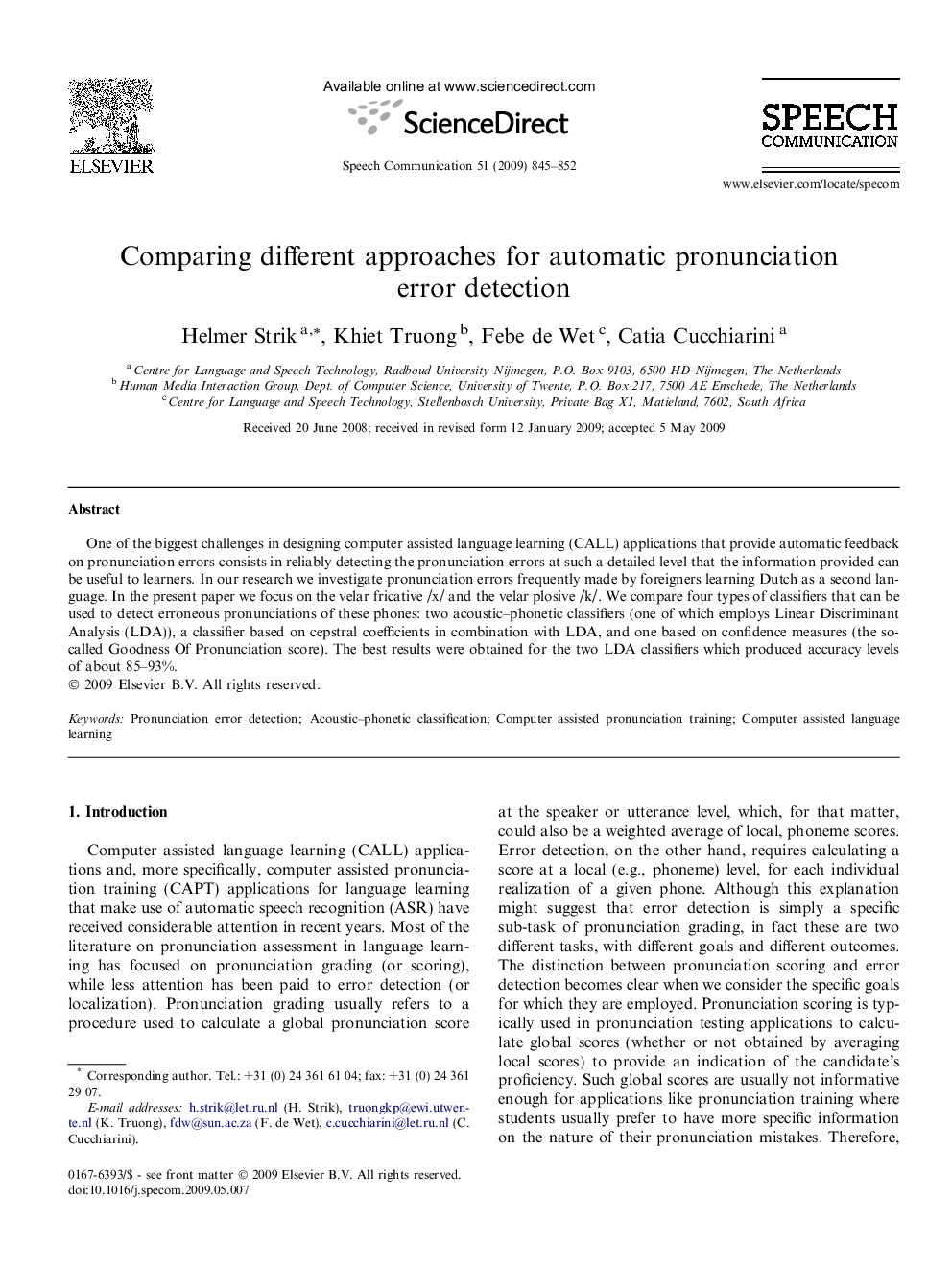| Article ID | Journal | Published Year | Pages | File Type |
|---|---|---|---|---|
| 566134 | Speech Communication | 2009 | 8 Pages |
One of the biggest challenges in designing computer assisted language learning (CALL) applications that provide automatic feedback on pronunciation errors consists in reliably detecting the pronunciation errors at such a detailed level that the information provided can be useful to learners. In our research we investigate pronunciation errors frequently made by foreigners learning Dutch as a second language. In the present paper we focus on the velar fricative /x/ and the velar plosive /k/. We compare four types of classifiers that can be used to detect erroneous pronunciations of these phones: two acoustic–phonetic classifiers (one of which employs Linear Discriminant Analysis (LDA)), a classifier based on cepstral coefficients in combination with LDA, and one based on confidence measures (the so-called Goodness Of Pronunciation score). The best results were obtained for the two LDA classifiers which produced accuracy levels of about 85–93%.
